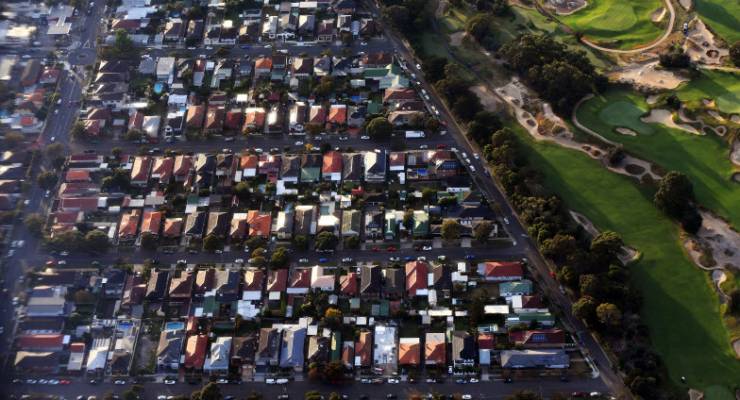
Australia is not only missing out on the strong global economic recovery, but seems to be digging its own private recession deeper and deeper. Further evidence for this arrived in the latest housing numbers from the Australian Bureau of Statistics (ABS).
Each month, local authorities allow a certain number of new dwellings to be built — houses, blocks of flats, town houses, and high-rise apartments. The number is a decent indicator of the economy’s health. It does not go up steadily with population. It is impacted by household incomes, home loan interest rates, and confidence in the future, among other factors.
This means that when economic growth is buoyant the number of residential approvals should rise. This occurred through the late 1980s after the historic prices and incomes accord, and through the mining investment boom of the early 2000s. Similarly, we would expect approvals to decline during recessions. This happened during the early 1990s recession, the early 2000s downturn after the Asian financial meltdown, and through the global financial crisis (GFC) of 2008-12.
Dismal dwellings data
Disturbingly, last week’s figures reveal that Australia now has declining housing approvals at a time of robust international trade and booming corporate profits.
Approvals for the month of June were just 18,453. That is below the numbers for June last year and for June 2015. It is well below the average monthly approvals for the whole of the two financial years 2014-15 and 2015-16, which was 19,577.
The June number was an improvement on the May figure of 16,640, but not by much. May yielded the lowest number in 32 months – since September 2014. This brings the tally for the full financial year to 219,219. Sounds high, but that is 8.1% below the previous year and 5.3% below the year before that.
Those figures are seasonally adjusted — generally used by politicians and commentators because they iron out glaring statistical blips. Economists also like to examine the trend data, which adjusts for other distorting factors.
This paints a gloomier picture still. In trend terms, the June figure was just 17,463 and the total for the financial year down to 217,364. That is 9% below the previous year and 5.4% below the year before that.
The last two months, May and June 2017, were the lowest two consecutive numbers in 34 months. So Australia is close to a three-year low.
New Zealand and other comparable countries
Looking at what is happening elsewhere highlights Australia’s isolation. New Zealand, for example, has a remarkably similar long-term history. Housing approvals — or consents, to use the Kiwi term –also rose strongly through the global booms and declined in the early 1990s, in 2001 and during the GFC.
Through the financial year just ended, New Zealand’s new home consents rose 4.7% over the previous year, up 15.7% on the year before. In fact, there has been a solid increase every year since the depths of the GFC in 2010-11.
Other countries that have enjoyed steady rises every year since the GFC include Canada, the United Kingdom, the USA, Sweden, Norway, Israel, Germany, Denmark, South Korea and the Philippines.
Declines across the construction sector
It is not just residential housing depressed in Australia at the moment. ABS data shows overall private construction in the March quarter was worth just $36.5 billion in chain volume units. That is the lowest level since June 2011 – during the GFC.
Government sector construction is also crumbling, as confirmed by total private and public construction in the March quarter – just $46.7 billion. Apart from last year’s September quarter – which was an equally dismal $46.5 billion – that was the lowest since March 2011.
This analysis is bolstered by increasing liquidations in the building sector and the alarming spike in construction fatalities as builders take dangerous shortcuts.
Two economies
Housing approvals might not be such cause for concern if this was the only wobbly number. But it isn’t. As Crikey has shown in recent weeks, Australia is also out of kilter with New Zealand and the rest of the developed world on deficits, public debt, jobs, underemployment, wealth inequality and income inequality.
Through the current global boom, Australia is increasingly being revealed as two economies in the one country. The multinational corporations are doing exceptionally well. Exports are buoyant, executive salaries are surging, big companies are reporting record profits and company tax collection rates are at an all-time low.
But for most Australians, wages are stagnating, incomes are down, full-time work is reducing, living costs are soaring, and household debt is expanding.
It’s enough to tempt you to migrate to New Zealand.








Hear that . . . hear that? A hollow sound . . . like someone’s head banging on a wooden table . . . bong, bong, bong . . . .
You’re right. NZ looks better by the day.
I feel the same way about new housing starts as I do about booming retail – irrational behaviour by a terminal society.